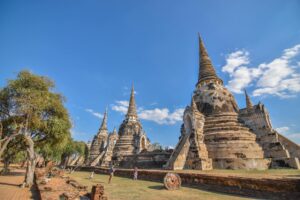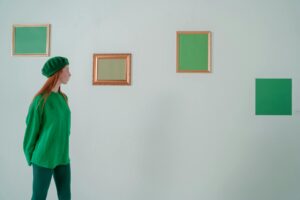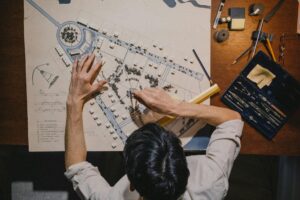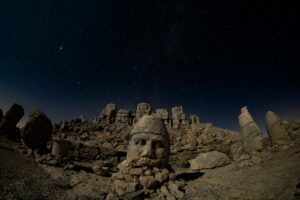The psychedelic culture has long been associated with counterculture movements, mystical experiences, and the transformation of consciousness. In this exploration of the artistic expressions born out of the psychedelic experience, we delve into various forms and styles of art that reflect the visions and insights generated by the use of powerful mind-altering substances.
One key aspect of psychedelic art is the use of fractals, intricate and infinitely repeating patterns that seem to represent the interconnected nature of reality. Present in both the natural world and the psychedelic experience, fractal patterns resonate with the viewer, echoing the transcendent and often deeply emotional states of consciousness experienced.
Visionary art is another important category of psychedelic expression, in which artists attempt to capture their extraordinary experiences in a way that will resonate with those who have had similar mystical encounters. This form of art often incorporates religious iconography from a variety of spiritual traditions, blending ancient esoteric ideas with modern concepts to create astonishingly detailed and striking images. Contemporary visionary artists such as Alex Grey have become icons of the psychedelic community, with their work adorning album covers, festival backdrops, and visionary art galleries.
Surrealism, with its intricate dreamscapes and seemingly ordinary objects twisted into bizarre and fantastical forms, can also serve as an excellent reflection of the psychedelic experience. By tapping into the subconscious mind, surrealists such as Salvador Dalí and René Magritte captured the spontaneous, irrational, and enigmatic nature of the hallucinogenic state, reminding viewers of their own encounters with the inexplicable.
Similarly, outsider art – created by those on the fringes of society – often exhibits the raw and primitive qualities that mirror the unfiltered nature of the psychedelic experience. Outsider artists such as Jean Dubuffet and Henry Darger drew from their personal life experiences and inner worlds to create wildly imaginative works that resonate with the uninhibited creativity and exploration that psychedelic experiences often provoke.
Abstract art, with its emphasis on form, color, and texture over representational imagery, can also represent the synesthetic and boundary-dissolving aspects of the psychedelic experience. Synesthesia – defined as the blending of sensory experiences, such as “seeing” music or “tasting” colors – is a common phenomenon in the trippy world. Artists like Wassily Kandinsky and Sonia Delaunay experimented with pushing the boundaries of perception by combining various artistic elements in surprising and unexpected ways. The resulting visual cacophony vibrates with the energy and pulsating rhythm of the mind-altered state.
Improvisation is another crucial element of psychedelic art, as it reflects the unpredictability and spontaneity of altered states. Through free-wheeling expression without preconceived boundaries, artists can channel their inner visions authentically and dynamically. This improvisational spirit can be found not only in visual art, but also in the realm of musical expression, dance, theatre, and seemingly endless creative outlets.
For many artists, the process of producing psychedelic art is a transformational experience in and of itself. Delving into the deepest layers of the subconscious mind can lead to profound insights, personal growth, and emotional healing. By capturing the emotions, thoughts, and visions encountered on the psychedelic journey, artists contribute to the evolution of thought and integration of these profound experiences into our collective consciousness.
Beyond the aesthetic appeal and pure enjoyment it provides, psychedelic art plays a crucial role in conveying the myriad of ineffable experiences encountered while journeying through the realms of the mind. It also celebrates the mysticism, transformation, and boundless creativity inherent in the intoxicating world of psychedelic culture. As the boundaries of conventional reality continue to be pushed, and as society increasingly warms to the idea of altered states being valuable sources of inspiration, the remarkable artistic expressions born from these experiences will continue to evolve and enchant us for years to come.







